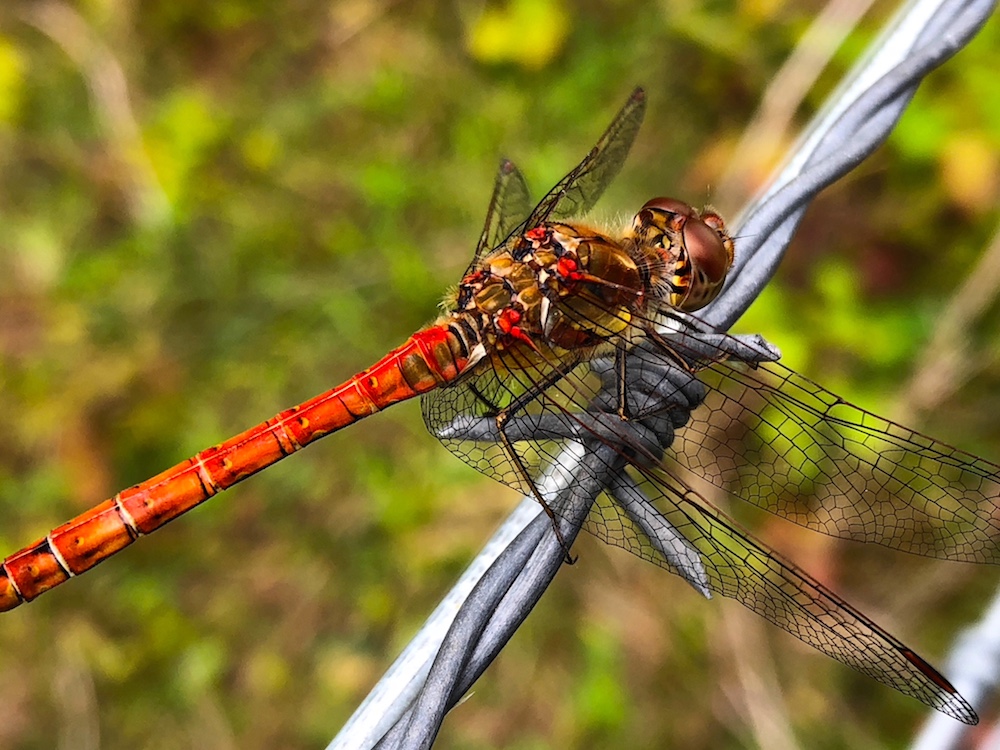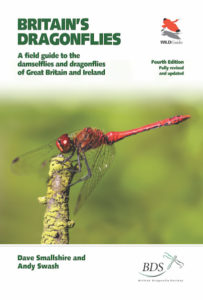On my recent travels in England, just before making the pilgrimage to the BirdFair, I had the great good fortune of exploring the area around Radley Lakes with Jo Cartmell in search of Water Voles – or at least signs thereof. As the day warmed, the butterflies and dragonflies became more active, culminating in the opportunity to snap a photo (with merely my mobile phone camera, no less) of this exquisite Common Darter, Sympetrum striolatum, male as it basked on a barbed wire fence along the path.

Not being particularly familiar with Britain’s dragonflies, and my preparations for the day having focused entirely upon small furry mammals rather than anything with an exoskeleton, I could only gaze in wonder at the beauty of this red marvel until such time as I had access to a reference source to put a name to it.
 Had I had a copy of the new Britain’s Dragonflies; A Field Guide to the Damselflies and Dragonflies of Great Britain and Ireland (Fully Revised and Updated Fourth Edition) in my field bag, a book that – unbeknownst to me at the time – was then en route to my desk back in Oregon, I would have wasted no time flipping through it to discover just what Dave Smallshire and Andy Swash had written about it.
Had I had a copy of the new Britain’s Dragonflies; A Field Guide to the Damselflies and Dragonflies of Great Britain and Ireland (Fully Revised and Updated Fourth Edition) in my field bag, a book that – unbeknownst to me at the time – was then en route to my desk back in Oregon, I would have wasted no time flipping through it to discover just what Dave Smallshire and Andy Swash had written about it.
Fully revised and updated by the authors, with an introduction by Nick Baker and produced in association with the British Dragonfly Society, this fourth edition is published under the WILDGuides imprint of Princeton University Press and covers all fifty-seven of the resident, migrant, and former breeding Odonate species – as well as six potential vagrants – to be found in Great Britain and Ireland.
Needless to say, I look forward to spending much more time with it very soon, both for reviewing purposes as well as in preparation for my next visit to Britain (may it come sooner rather than later).
If you enjoyed reading this, please consider signing up for The Well-read Naturalist's newsletter. You'll receive a helpful list of recently published reviews, short essays, and notes about books in your e-mail inbox once each fortnight.
